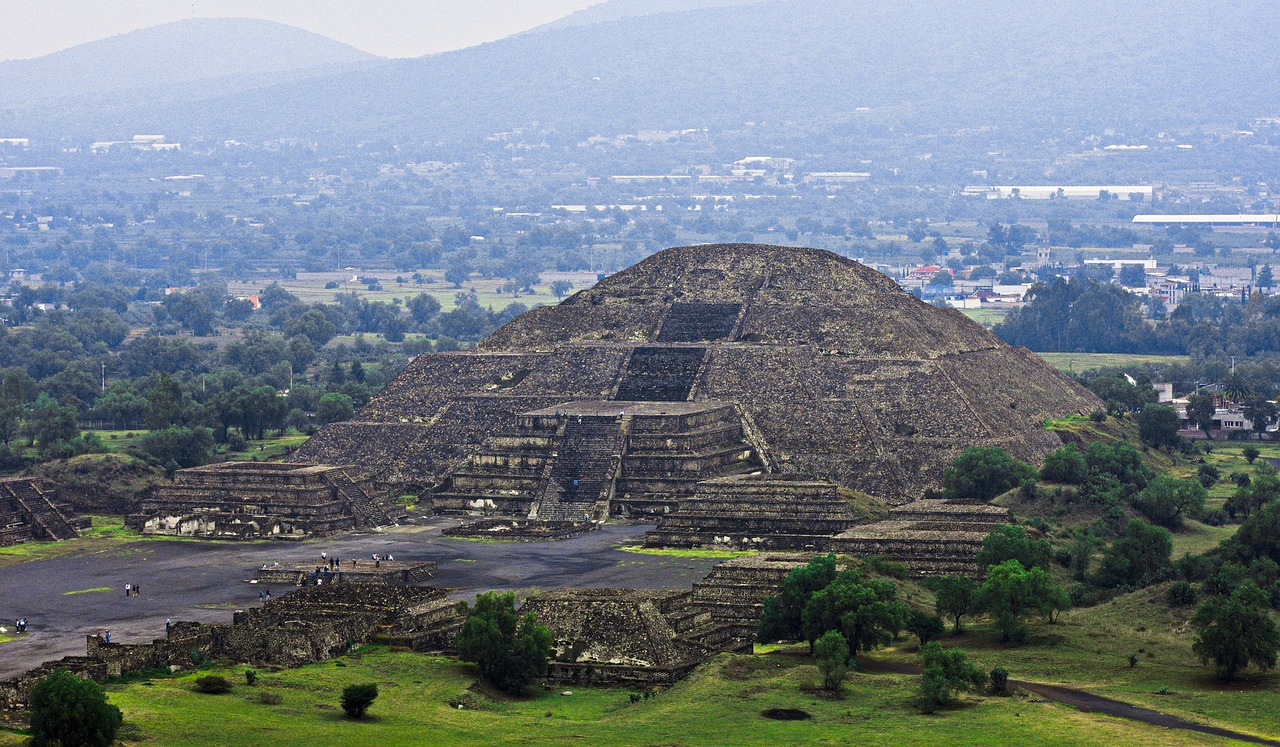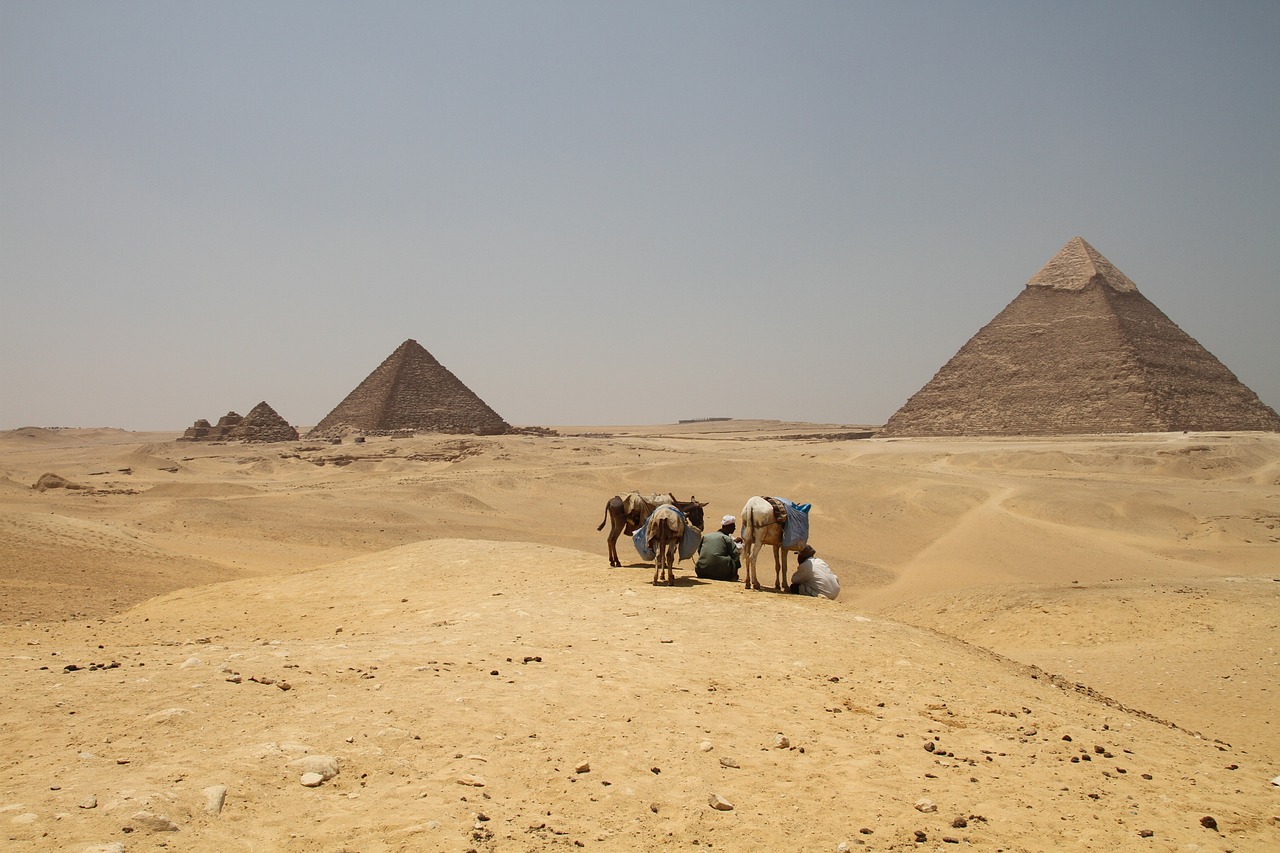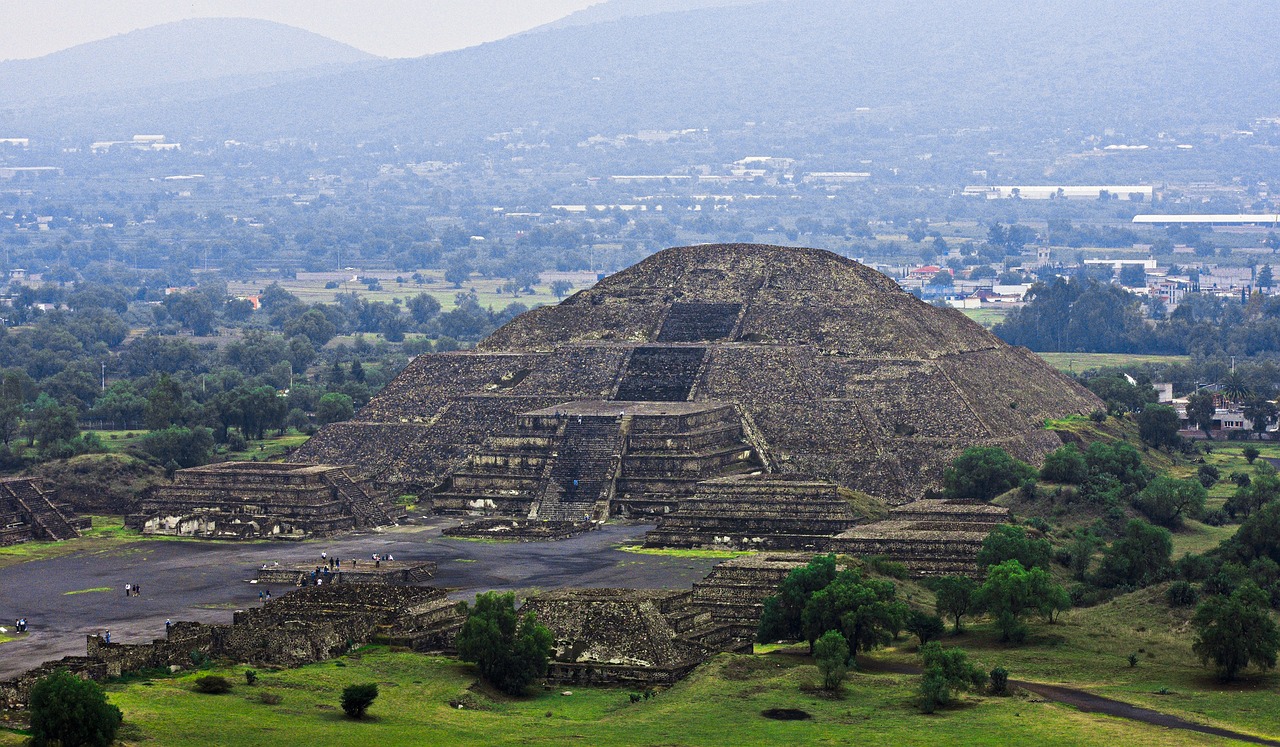The Rise and Fall of the Aztec Empire
The Aztec Empire, a once-mighty civilization that rose to power in Mesoamerica, had a tumultuous journey marked by both glory and tragedy. From humble beginnings as a nomadic tribe in northern Mexico, the Aztecs forged a path of conquest and expansion, establishing themselves as a dominant force in the region. Their capital city of Tenochtitlan stood as a testament to their grandeur, a bustling metropolis that dazzled visitors with its architectural marvels and vibrant culture.
However, the arrival of the Spanish conquistadors, led by the ambitious Hernan Cortes, brought about a swift and devastating downfall for the Aztec Empire. What began as a seemingly friendly encounter soon turned into a brutal conflict, with the superior military tactics and advanced weaponry of the Spanish overwhelming the Aztec forces. The once-mighty empire crumbled under the weight of disease, rebellion, and betrayal, culminating in the fall of Tenochtitlan in 1521.
Despite the tragic end of the Aztec Empire, its legacy endures in the heart of modern-day Mexico. The rich tapestry of Aztec culture, with its intricate art, complex social structures, and deep spiritual beliefs, continues to influence the identity of the Mexican people. The echoes of the past can be heard in the language, traditions, and customs that have been passed down through generations, serving as a reminder of the resilience and strength of the Aztec civilization.
As we reflect on the rise and fall of the Aztec Empire, we are confronted with a complex tapestry of history, filled with triumphs and tragedies, conquests and losses. The story of the Aztecs serves as a cautionary tale, a reminder of the fragility of power and the enduring impact of cultural clashes. It is a narrative that invites us to ponder the depths of human ambition and the consequences of our actions, urging us to learn from the past as we navigate the challenges of the present.

Origins of the Aztec Civilization
Topics to be discussed in the article include the origins of the Aztec civilization, their expansion and dominance in Mesoamerica, the arrival of the Spanish conquistadors, the fall of the empire, and the lasting impact on modern-day Mexico.
The Aztec civilization began as a small nomadic tribe in northern Mexico, eventually settling in the Valley of Mexico and establishing the city of Tenochtitlan. They adopted cultural elements from previous Mesoamerican civilizations like the Maya and Toltec.
Their journey from a humble nomadic tribe to a powerful empire was marked by a fusion of traditions and innovations. Drawing inspiration from their predecessors, the Aztecs forged a unique identity that would shape their future conquests and achievements.
Imagine a tapestry woven with threads of ancient wisdom and modern ambition, each stitch representing a step towards greatness. The Aztecs, like skilled weavers, intertwined their past with their aspirations, creating a cultural fabric that would endure the test of time.
As they settled in the Valley of Mexico, the Aztecs embraced the fertile land as a canvas for their dreams. The city of Tenochtitlan, built on an island in Lake Texcoco, became the heart of their civilization, a vibrant hub of trade, religion, and innovation.
Through intricate networks of trade and diplomacy, the Aztecs connected with neighboring tribes, absorbing knowledge and forging alliances. This cultural exchange enriched their society, laying the foundation for their future expansion and dominance in Mesoamerica.
In the shadow of towering pyramids and bustling markets, the Aztec civilization flourished, blending ancient traditions with new ideas. Their journey from humble beginnings to imperial power was a testament to their resilience, adaptability, and unwavering spirit.
Like a phoenix rising from the ashes, the Aztecs transformed adversity into opportunity, shaping their destiny with each brick laid and each alliance forged. Their origins, rooted in a quest for identity and prosperity, set the stage for a remarkable chapter in Mesoamerican history.

Expansion and Dominance in Mesoamerica
Topics to be discussed in the article include the origins of the Aztec civilization, their expansion and dominance in Mesoamerica, the arrival of the Spanish conquistadors, the fall of the empire, and the lasting impact on modern-day Mexico.
The Aztecs, known for their military prowess and strategic alliances, rapidly expanded their empire across Mesoamerica through a combination of conquest and diplomacy. By imposing tribute on conquered territories, they solidified their dominance and established a complex social hierarchy that maintained their power.
One of the key factors contributing to the Aztec dominance was their ability to adapt and integrate elements from diverse cultures they encountered. This cultural fusion not only enriched their society but also allowed them to leverage the strengths of different civilizations to strengthen their own empire.
At the heart of their dominance was the magnificent city of Tenochtitlan, built on an island in the middle of Lake Texcoco. This urban marvel, with its intricate network of canals and impressive temples, served as the political and religious center of the Aztec Empire. The grandeur of Tenochtitlan symbolized the power and influence of the Aztec civilization.
Through their expansion, the Aztecs transformed Tenochtitlan into one of the largest and most sophisticated cities in the world, rivaling major European capitals of the time. The wealth and resources flowing into the city fueled its growth, attracting artisans, traders, and warriors from far and wide.
As the Aztec Empire expanded, it encountered diverse cultures and societies, each with its own customs and traditions. The Aztecs' ability to navigate these differences and forge alliances with neighboring city-states allowed them to extend their influence over a vast territory, creating a network of tribute-paying provinces that sustained their empire.
In their quest for dominance, the Aztecs employed a combination of military might and political cunning, using both force and diplomacy to maintain control over their vast domain. This dual strategy of conquest and cooperation enabled them to establish a powerful empire that stood as a formidable force in Mesoamerica.
The legacy of the Aztec expansion and dominance in Mesoamerica endures as a testament to their ingenuity and resilience in the face of formidable challenges. Their ability to adapt, innovate, and assert their authority over a diverse landscape showcases the remarkable achievements of this ancient civilization.
Q: What led to the downfall of the Aztec Empire?
A: The fall of the Aztec Empire was precipitated by a combination of factors, including the introduction of diseases like smallpox, internal rebellions among subject peoples, and the superior military tactics of the Spanish conquistadors.
Q: How did the Aztec Empire influence modern-day Mexico?
A: Despite the empire's destruction, elements of Aztec culture, language, and traditions have survived and continue to shape the identity of the Mexican people, contributing to the country's rich cultural heritage.
Q: What are some of the ongoing debates surrounding the Aztec Empire?
A: Scholars continue to discuss various aspects of Aztec civilization, from their achievements in art and architecture to the ethical implications of Spanish colonization. These debates offer valuable insights into the complexities of this pivotal historical period.

Spanish Conquest of the Aztecs
The Spanish Conquest of the Aztecs marked a pivotal moment in the history of the Aztec Empire. Led by the ambitious conquistador Hernan Cortes, the Spanish arrival in 1519 brought both awe and fear to the Aztec ruler Montezuma II. Initially, the Aztecs welcomed the foreigners, mistaking them for deities due to their advanced weaponry and armor. However, this illusion quickly shattered as the true intentions of the Spanish became clear.
Driven by a thirst for gold, power, and the spread of Christianity, the Spanish sought to conquer and subjugate the Aztec Empire. Through a combination of military prowess, manipulation, and betrayal, Cortes and his men turned the Aztec people against their own leader, Montezuma II. The once mighty empire found itself embroiled in a brutal conflict that would ultimately lead to its downfall.
One of the most infamous events of the Spanish Conquest was the capture and subsequent execution of Montezuma II. This act further fueled the resentment and resistance of the Aztec people, who rose up in defiance against their foreign invaders. The streets of Tenochtitlan, once bustling with life, became battlegrounds stained with blood as the Aztecs fought fiercely to defend their homeland.
Despite their valiant efforts, the Aztecs were no match for the superior military tactics, weaponry, and diseases brought by the Spanish. Smallpox, in particular, ravaged the Aztec population, decimating their numbers and weakening their resolve. The prolonged siege of Tenochtitlan in 1521 sealed the fate of the once-mighty empire, bringing an end to centuries of Aztec dominance in Mesoamerica.
The Spanish Conquest of the Aztecs stands as a stark reminder of the devastating impact of colonization on indigenous civilizations. It forever altered the course of history for the Aztec people, leaving a legacy of loss, resilience, and cultural upheaval that continues to resonate to this day.

The Fall of the Aztec Empire
The Fall of the Aztec Empire marked a tumultuous period in Mesoamerican history, characterized by a series of events that led to the downfall of one of the most powerful civilizations of the time. Several factors contributed to the ultimate collapse of the Aztec Empire, with one of the most significant being the introduction of smallpox by the Spanish conquistadors. This devastating disease, to which the Aztecs had no immunity, decimated the population, weakening the empire from within.
Internal rebellions also played a crucial role in the fall of the Aztec Empire. Discontent among subjected tribes and communities, who resented Aztec rule and the imposition of tribute, fueled uprisings that further destabilized the empire. These internal conflicts, coupled with the external pressure exerted by the Spanish forces, weakened the Aztecs' ability to defend their territories effectively.
The superior military tactics and weaponry of the Spanish conquistadors proved to be a formidable challenge for the Aztec warriors. Led by Hernan Cortes, the Spanish forces strategically exploited existing divisions within the Aztec Empire, turning former allies against each other and isolating Tenochtitlan, the capital city. The siege of Tenochtitlan in 1521 was a prolonged and brutal affair, culminating in the eventual defeat and surrender of the Aztec forces.
Despite the valiant efforts of the Aztec warriors and the leadership of figures like Cuauhtemoc, the last Aztec emperor, the empire could not withstand the combined onslaught of disease, internal strife, and Spanish military might. The fall of Tenochtitlan symbolized the end of Aztec dominance in Mesoamerica, paving the way for Spanish colonization and the subsequent reshaping of the region's political and cultural landscape.

Legacy of the Aztec Empire
The legacy of the Aztec Empire continues to resonate through the corridors of time, leaving an indelible mark on the cultural tapestry of modern-day Mexico. Despite the fall of their empire, the Aztecs have bequeathed a rich inheritance that transcends centuries, shaping the identity of the Mexican people and contributing to the country's vibrant heritage.
One of the most enduring legacies of the Aztecs is their language, Nahuatl, which still influences Mexican Spanish today. Many Nahuatl words have been integrated into everyday speech, reflecting the lasting impact of Aztec linguistic traditions on Mexican culture. This linguistic fusion serves as a reminder of the Aztec civilization's linguistic prowess and their ability to adapt and evolve.
Furthermore, Aztec art and architecture have left an indelible imprint on Mexico's aesthetic landscape. The intricate designs, vibrant colors, and symbolic motifs of Aztec art continue to inspire contemporary Mexican artists, infusing their creations with a sense of cultural pride and heritage. From intricate featherwork to imposing pyramids, the legacy of Aztec craftsmanship endures as a testament to their artistic ingenuity.
The Aztec religious beliefs and practices have also persisted in Mexican culture, blending with Catholic traditions to create a unique syncretic spirituality. Festivals such as Dia de los Muertos (Day of the Dead) and Semana Santa (Holy Week) showcase this fusion of Aztec and Christian rituals, underscoring the enduring influence of Aztec cosmology on Mexican religious life.
In addition, the agricultural practices of the Aztecs, such as chinampas (floating gardens), have had a lasting impact on Mexican agriculture and sustainability. The innovative techniques developed by the Aztecs to cultivate crops in the challenging environment of the Valley of Mexico continue to inform modern farming practices, highlighting the Aztec legacy of environmental stewardship and ingenuity.
Overall, the legacy of the Aztec Empire serves as a poignant reminder of the resilience and creativity of indigenous cultures in the face of adversity. By embracing and celebrating their heritage, modern Mexicans pay homage to the enduring spirit of the Aztec civilization, ensuring that their legacy remains vibrant and relevant in the cultural mosaic of contemporary Mexico.

Impact on Indigenous Peoples
The impact of the Spanish conquest on the indigenous peoples of the Aztec Empire was profound and far-reaching. The arrival of the Spanish brought about a period of immense suffering and upheaval for the native populations of Mesoamerica. One of the most devastating consequences was the introduction of diseases such as smallpox, to which the indigenous peoples had no immunity. This led to widespread illness and death, decimating entire communities and significantly reducing the indigenous population.
Furthermore, the Spanish imposed forced labor on the indigenous peoples, exploiting their resources and labor for the benefit of the colonial powers. This system of encomienda and repartimiento subjected the natives to harsh working conditions and economic exploitation, further weakening their communities and traditional ways of life.
In addition to physical hardships, the cultural impact of the Spanish conquest was profound. The imposition of Christianity and the suppression of indigenous religions and practices eroded the cultural identity of the native populations. Many aspects of indigenous culture, including language, art, and traditions, were suppressed or destroyed, leading to a loss of cultural heritage that continues to be felt to this day.
Overall, the impact of the Spanish conquest on the indigenous peoples of the Aztec Empire was a tragic chapter in history that resulted in widespread suffering, loss of life, and cultural devastation. The legacy of this period continues to shape the experiences and identities of indigenous communities in Mexico and serves as a reminder of the enduring effects of colonialism.

Historical Controversies and Perspectives
Scholars and historians have long grappled with the complex legacy of the Aztec Empire, sparking debates and controversies that continue to this day. One of the key points of contention revolves around the achievements of the Aztecs in various fields such as art, architecture, and agriculture. Some argue that the Aztecs made significant advancements in these areas, showcasing a high level of sophistication and cultural richness.
On the other hand, there are those who question the ethical implications of the Spanish conquest and colonization of the Aztec Empire. The brutal tactics employed by the Spanish conquistadors, including forced labor, violence, and the spread of diseases like smallpox, have raised ethical concerns about the impact of European colonization on indigenous populations.
Furthermore, differing perspectives shed light on the complexities of the interactions between the Aztecs and the Spanish. While some view the Spanish conquest as a necessary step in the advancement of civilization, others condemn it as a ruthless act of exploitation and destruction. These contrasting viewpoints offer valuable insights into the nuances of this critical period in history.
Moreover, the interpretation of Aztec history is also influenced by modern cultural and political contexts. As societies grapple with issues of colonialism, identity, and heritage, the legacy of the Aztec Empire continues to be reexamined and reevaluated. By exploring historical controversies and perspectives, we gain a deeper understanding of the impact of the Aztec civilization on the past and present.

Modern Interpretations and Cultural Revival
In contemporary Mexico, efforts to revive Aztec traditions and reclaim indigenous heritage have gained momentum. Cultural events, language revitalization programs, and archaeological discoveries contribute to a deeper understanding of the Aztec Empire's enduring influence. The modern interpretations of Aztec culture aim to bridge the gap between the past and the present, fostering a sense of pride and connection among the Mexican population. Through art exhibitions, traditional ceremonies, and educational initiatives, the rich history of the Aztec civilization is being brought to life once again.
Frequently Asked Questions
- What were the main reasons for the rise of the Aztec Empire?
The Aztec Empire rose to power through a combination of military conquest, strategic alliances, and the establishment of a complex tribute system. Their capital city, Tenochtitlan, became a thriving hub of trade and culture, contributing to their dominance in Mesoamerica.
- How did the Spanish conquistadors impact the Aztec Empire?
The arrival of the Spanish conquistadors, led by Hernan Cortes, had a profound impact on the Aztec Empire. The introduction of diseases like smallpox, along with superior military tactics, weakened the Aztec resistance and ultimately led to the fall of their empire.
- What is the lasting legacy of the Aztec Empire on modern-day Mexico?
The legacy of the Aztec Empire can be seen in various aspects of modern-day Mexico, including language, culture, and traditions. Many Mexican customs and beliefs have roots in Aztec practices, showcasing the enduring influence of this ancient civilization.



















